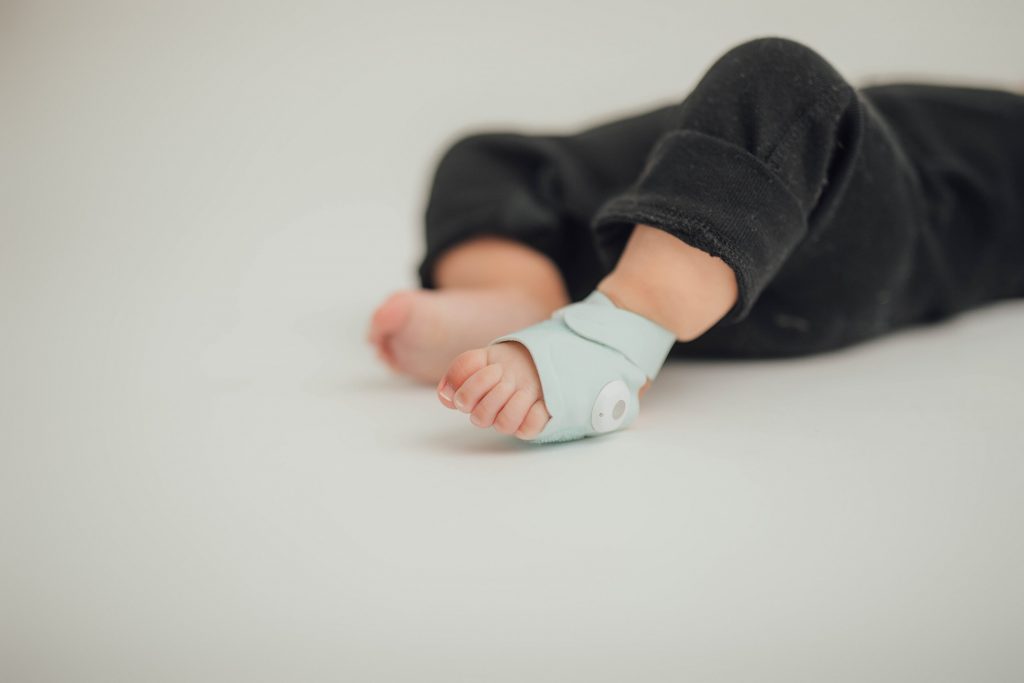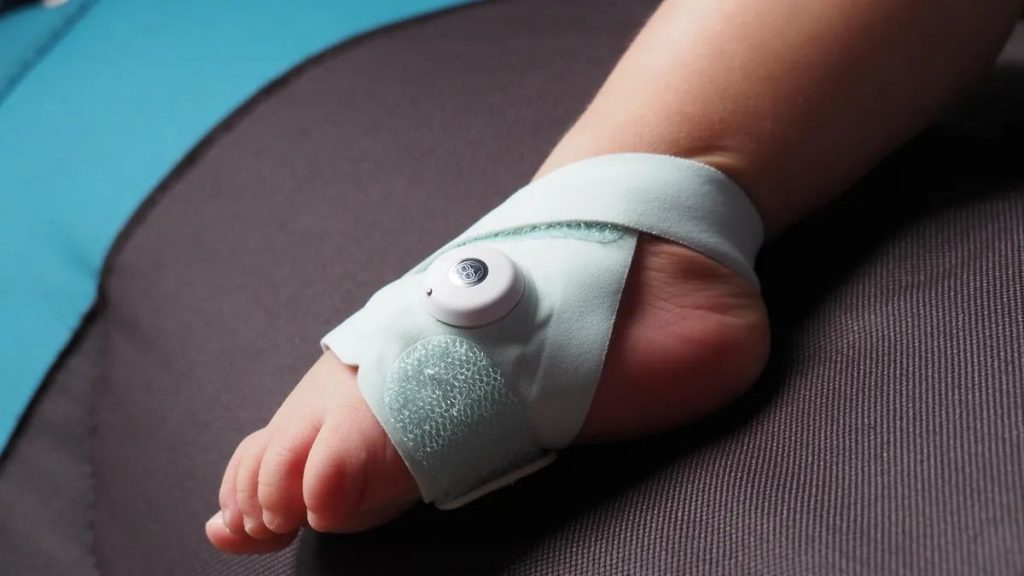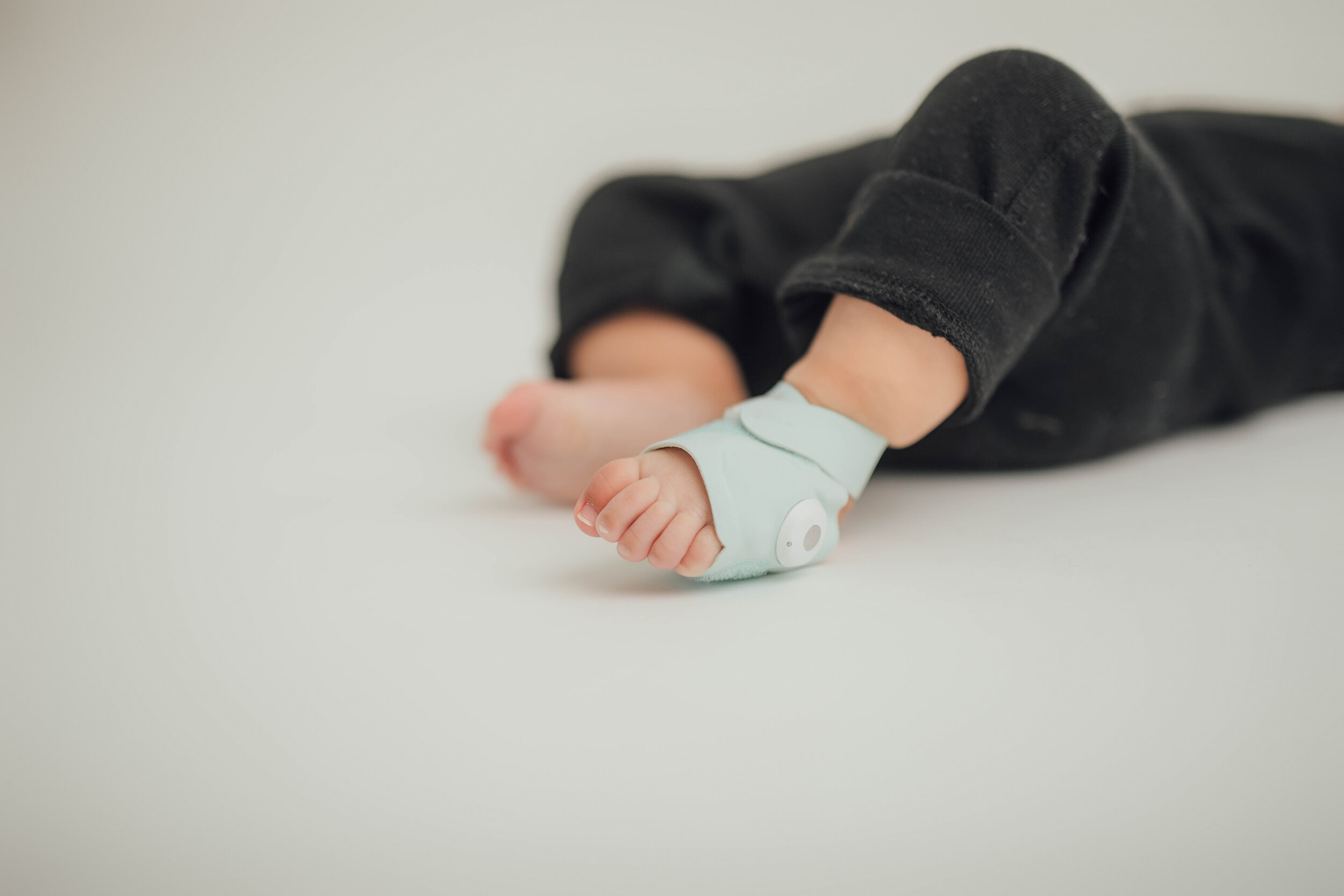Quality sleep is necessary for the healthy development of the baby. Every worried parent is wondering whether their baby’s getting the desirable quality and amount of rest it needs, so we often turn to gadgets to help chase the worries away.
The Owlet sock is inevitably one of the most popular parenting accessories. The insightful gadget is here to help you easily check up on your baby’s sleeping patterns.
But did purchasing the device give you another thing to worry about? Do you know how to clean Owlet sock? If not, read along, as I’ll cover all the details in the text below.

How to Clean Owlet Sock
According to the manufacturer of the Owlet sock, you should clean the device at least every two weeks. That’ll prevent the buildup of dust and other particles that can easily irritate your baby’s skin.
Although the fabric is sturdy, the sensory needs to be handled with the utmost care. Therefore, the Owlet sock needs to be hand-washed using lukewarm water and a mild detergent. Once the gadget is clean, give it enough time to dry properly, after which you can continue using it.
If you’re a worried parent who wants to be extra cautious and needs to be walked through each step, so you don’t get anything wrong, continue reading the following guide.
Step-By-Step Guide
Before we get into cleaning your baby’s Owlet sock, let’s first take a look at what you’ll need. You’ll need to use a gentle laundry detergent – use the same one you use for the baby’s clothes. Next, you’ll need a clean and soft toothbrush for brushing the sensor thoroughly, a clean, dry towel for drying the device, and a sink with a drain plug, a water basin, or a bowl where you can conveniently clean the sock.
With these supplies at hand, let’s get you started:
Create a soapy solution
The first thing you need to do is fill the sink, basin, or bowl with lukewarm water. You can use cold water as well, but lukewarm water works better.
Add a little bit of the gentle laundry detergent, and mix the solution well.
Turn off the Owlet sock
Before continuing to the next step, ensure the sock sensor light is off. Cleaning the sock while the sensor is running could potentially damage the device.
With the device turned off, you’ll need to separate the sensor from the sock. It is easy, as the sensor quickly detaches from the strap as you pull it gently.
Clean the sensor
Submerge the fabric strap in the lukewarm soapy solution and let it sit while you handle the sensor.
Then, dip the toothbrush into the solution, and without using excess water, brush the sensor in circular motions. Wash the toothbrush using clean water, then brush away any residues. Repeat the procedure several times until the sensor is entirely clean.
After thoroughly cleaning the sensor, you must dry it as quickly as possible. Press the sensor into a dry towel to remove the initial moisture, then lay it out to dry completely.
Read more: How to Wash Snuggle Me Organic

Clean the strap
After the strap has some time to sink in the soapy solution, you’ll need to clean it gently. Gently rub the fabric with your hands, then rinse it clean under running water until the detergent is removed.
After cleaning the fabric strap, blot it dry using a clean towel, then set it aside until it dries completely.
Continue to use the Owlet sock
Once the sensor and strap are entirely dry, you can assemble the device again. Snap the sensor into place, and you shouldn’t have trouble using it.
Place the Owlet on the charging station if it needs to be charged. Turn the device on, perform a safety check to see whether everything is working fine and if there isn’t any leftover moisture, and you can strap the Owlet around your little one’s foot.
Precautions
There are some things you need to be extra cautious about when cleaning the Owlet sock, including:
Using the right detergent
You must be very careful with the detergent you will use to wash the fabric strap and brush the sensor. Avoid hand soap, dish soap, and antibacterial soap, as these may irritate sensitive baby skin. Instead, use a laundry detergent you’ve previously tried and know won’t cause any implications. The best thing you can do is use the same detergent you use for washing your baby’s clothes.
Turning the sensor off
Before cleaning the device, you must ensure it is turned off. You can check the Base Station light to see whether the sensor is powered. If it is turned on, you can turn off the device by pressing the top of the Base Station.
Drying the Owlet sock
Another thing you need to consider when cleaning the Owlet sock is moisture. Although it is inevitable to get the strap and sensor wet, they must be completely dry. Therefore, give both the strap and sensor enough time so they can dry entirely. Don’t attach the sock to your baby’s feet unless it is completely dry or if your baby’s foot is wet.
Also read: How to Wash a Boppy Lounger
Using the Owlet Sock After Cleaning
If you’ve successfully washed and dried your Owlet sock, you can continue using it as you previously did. If you encounter some unexpected problems after cleaning the Owlet sock, make sure you check:
- Matching the sock – the Owlet socks have a left/right orientation; make sure you’ve got it right
- Snug fit – ensure a snug fit to get accurate readings from the device; use the velcro straps to adjust the fit
- Battery – if you forgot to charge the sensor, its battery might be low; connect the device to the charging stations to see whether that solves your issue
So now you know how to clean Owlet sock and troubleshoot issues afterward. Just make sure you don’t submerge the sensor in water, as that can damage the electronic device.








